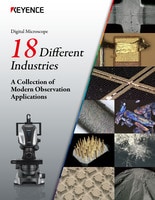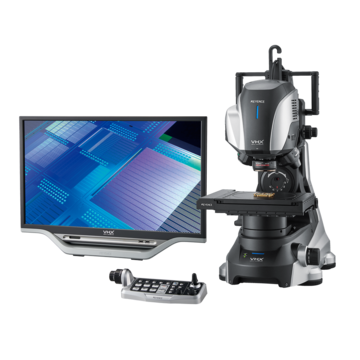Digital Microscopes
Optical Microscopes
What Is an Optical Microscope?
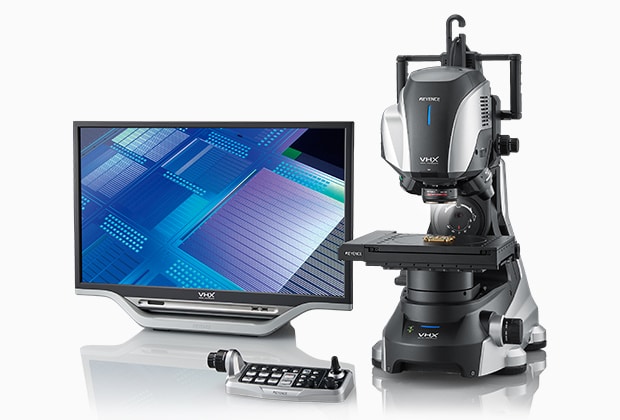
Optical microscope is the general term used for microscopes that use visual light and glass lenses to perform magnified observation of objects.
Because they have historically been used to observe organisms such as microorganisms and the cells of plants and animals, they are also called biological microscopes.
We’re here to provide you with more details.
Reach out today!

Optical Microscope Structure
In the Netherlands in the latter half of the 17th century, Antonie Philips van Leeuwenhoek created the single-lensed microscope (a microscope with one lens) and discovered microorganisms and sperm.
At the same time in the United Kingdom, Robert Hooke created the compound microscope, with a combination of two lenses: an objective lens and an eyepiece, and used it to observe the structure of cork.
Because the structure appeared to be a collection of small rooms like a beehive, he named these rooms cells. This led to the use of the word cell in biology.
The currently used optical microscopes are generally compound microscopes that combine an objective lens and an eyepiece.
With typical optical microscopes, the light source is located below the sample, and it is observed by using the objective lens to magnify the light that is transmitted through the sample.
Therefore, it is not possible to observe objects that do not transmit light. To observe such samples, it is necessary to cut them into thin slices and secure these slices on glass slides or similar objects.
Stereoscopic microscopes are used to observe objects that cannot be processed into thin slices.
Stereoscopic microscopes are optical microscopes that project light down onto the sample. The reflected light is then magnified by the objective lens for observation.
Stereoscopic microscopes have two eyepieces, allowing for 3D observation that is the same as viewing the sample with the naked eye.
Stereoscopic microscopes are used for relatively low-magnification observation. Metallurgical microscopes are used to observe the light reflected from samples at high magnification.
We’re here to provide you with more details.
Reach out today!

Optical Microscope Applications
It is said that the minimum distance between two points that can be distinguished with the naked eye is 0.1 mm (0.004"), the thickness of a strand of hair.
Optical microscopes can distinguish a minimum distance of 200 nm.
Electron microscopes are generally used to observe objects smaller than 200 nm.
We’re here to provide you with more details.
Reach out today!

Limitations of Optical Microscopes
- Multiple microscopes required when there are different applications
- Short observation distance
- Requires thin samples secured on glass slides
- Shallow depth of field makes it difficult to observe targets with uneven surfaces
- Capturing images requires an optional camera, but capturing high-resolution images is difficult
- Not equipped with measurement functions
We’re here to provide you with more details.
Reach out today!

Reasons for Using VHX Series Digital Microscopes
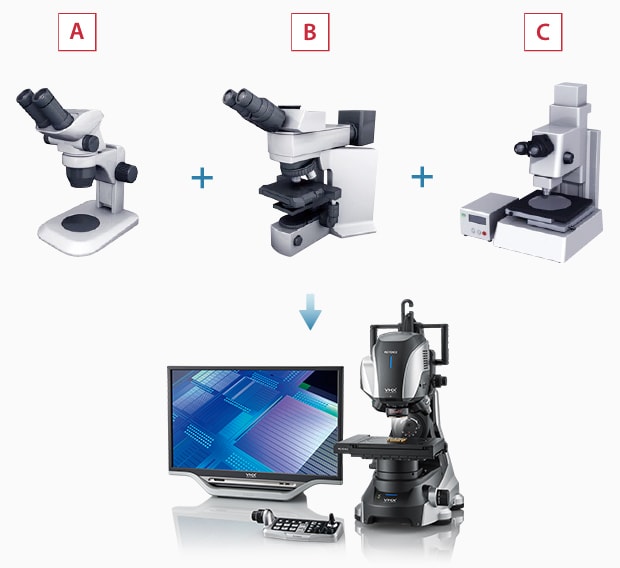
A : Srereoscopic microscope B : Metallurgical microscope C : Measurement microscope
Covers the functions of stereoscopic, metallurgical, and measurement microscopes with one unit
Ring illumination, coaxial illumination, and transmitted illumination are all built in, allowing for seamless observation from low to high magnifications.
The large depth of field allows the depth composition function to provide observation with the entire image on the screen in focus even at high magnifications
There is no need to cut or polish the target. (Non-destructive observation is possible.)
Tilted observation of threads

Macro image, 20x

Magnified image, 200x
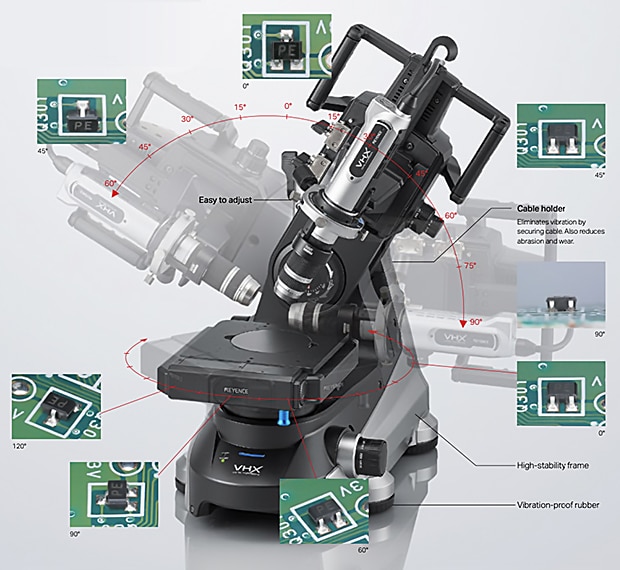
Long observation distance allows for free-angle observation
The standard-equipped camera and monitor allow photographs to be captured with the same quality as monitored images


Measurement of planes and 3D profiles also possible
Measurement of the graphite spheroidization rate, 100x


2D measurement image
3D profile of connector pins, 50x
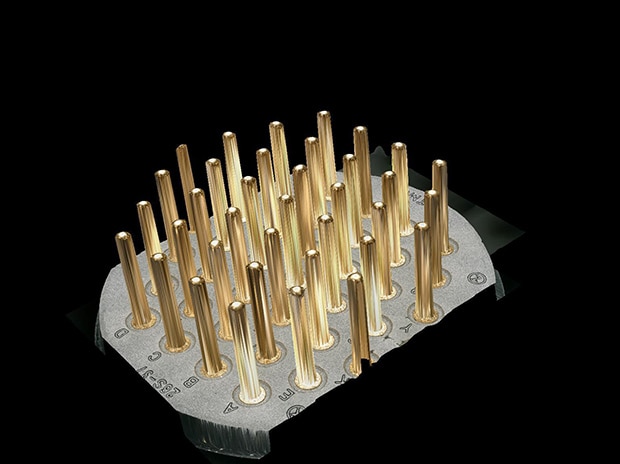

3D measurement image
We’re here to provide you with more details.
Reach out today!

Optical Microscopes
Optical microscopes are the most common type of microscope.
By using an optical lens constructed of multiple objective lenses, they enable observations of the target at magnifications that are 100, 200, or 300 times higher than those performed with a microscope having a single lens.
This section explains optical microscopes in detail.
We’re here to provide you with more details.
Reach out today!



